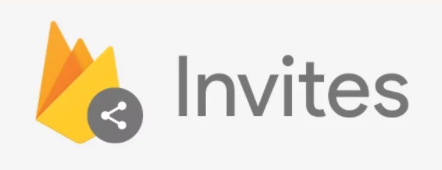Since plugin version 3.12.0 you can use Firebase Invites features.
Invites lets you invite other users to your app from right within your own app, via SMS and/or Email.
Keep in mind that invites are based of dynamic links, and so calling for an invite may return a plain dynamic link, in which case invitationId is null.
- Make sure you've uploaded your SHA1 fingerprint(s) to the Firebase console, then download the latest
google-services.jsonfile and add it toapp/App_Resources/Android.
- On iOS the user must be signed in with their Google Account to send invitations.
- You must have the App Store ID set in your developer console project in order for invitations to successfully be sent.
- For more details see https://firebase.google.com/docs/invites/ios.
Open app/App_Resources/iOS/Info.plist and add this somewhere in the file (if it's not already there):
<key>NSContactsUsageDescription</key>
<string>For inviting others to use this app.</string>To have a dynamic link open your app you need to add an Intent filter to the <activity> in app/App_Resources/Android/AndroidManifest.xml:
<intent-filter>
<action android:name="android.intent.action.VIEW"/>
<category android:name="android.intent.category.DEFAULT"/>
<category android:name="android.intent.category.BROWSABLE"/>
<data android:host="www.coolapp.com" android:scheme="http"/><!-- Change this -->
<data android:host="www.coolapp.com" android:scheme="https"/><!-- .. and this! -->
</intent-filter>We may automate parts of this later, but for now you'll need to do it by hand.
On iOS you'll need to add a custom URL scheme to app/App_Resources/iOS/Info.plist (if you don't have this one already):
<key>CFBundleURLTypes</key>
<array>
<dict>
<key>CFBundleTypeRole</key>
<string>Editor</string>
<key>CFBundleURLName</key>
<string>firebaseplugin.deeplink.urlscheme</string><!-- anything you like, but must be unique -->
<key>CFBundleURLSchemes</key>
<array>
<string>org.nativescript.firebasedemo</string><!-- the same as your bundle id (nativescript.id in package.json) -->
</array>
</dict>
</array>Now open the project in Xcode (the platforms/ios/<projectname>.xcworkspace file!) and in the Capabilities tab
enable Associated Domains and add the following to the Associated Domains list:
applinks:app_code.app.goo.gl
Where app_code can be found in the Firebase console at the Dynamic Links section.
The previous step created a the fileplatforms/ios/YourAppName/(Resources/)YourAppName.entitlements.
Copy that file to app/App_Resources/iOS/ (if it doesn't exist yet, otherwise merge its contents),
so it's not removed when you remove and re-add the iOS platform. The relevant content looks like this:
<key>com.apple.developer.associated-domains</key>
<array>
<string>applinks:j4ctx.app.goo.gl</string>
</array>firebase.invites.sendInvitation({
title: "Invite title here",
message: "Invite message here"
}).then(
function (result) { // SendInvitationResult
console.log(result.count + "invitations sent, ID's: " + JSON.stringify(result.invitationIds));
},
function (error) {
console.log("sendInvitation error: " + error);
}
);The options you can pass to sendInvitation are:
| param | optional | description |
|---|---|---|
title |
no | Invitation title you want to send. |
message |
no | Sets the default message sent with invitations. |
deepLink |
yes | Sets the link into your app that is sent with invitations. |
callToActionText |
yes | Sets the call-to-action text of the button rendered in email invitations. Cannot exceed 32 characters. |
customImage |
yes | Sets the URL of a custom image to include in email invitations. The image must be square and around 600x600 pixels. The image can be no larger than 4000x4000 pixels. |
androidClientID |
yes | If you have an Android version of your app and you want to send an invitation that can be opened on Android in addition to iOS. |
iosClientID |
yes | You can find your iOS app's client ID in the GoogleService-Info.plist file you downloaded from the Firebase console. |
When the user opens your app from an invite or a dynamic link, you can retrieve the details via the getInvitation function after you initialize Firebase:
firebase.invites.getInvitation().then(
function (result) { // GetInvitationResult
console.log("deepLink: " + result.deepLink + ", invitationId: " + result.invitationId+ ", matchType: "+ result.matchType);
},
function (error) {
console.log("getInvitation error: " + error);
}
);When your app is launched from a dynamic link, you may want to capture that link and perform some action.
You can either add an onDynamicLinkCallback callback to init, or use addOnDynamicLinkReceivedCallback:
firebase.init({
onDynamicLinkCallback: function (result) {
console.log("Dynamic Link: " + result.url+ ", matchConfidence: "+ result.matchConfidence);
}
});.. or:
firebase.addOnDynamicLinkReceivedCallback(
function (url) {
// ..
}
);